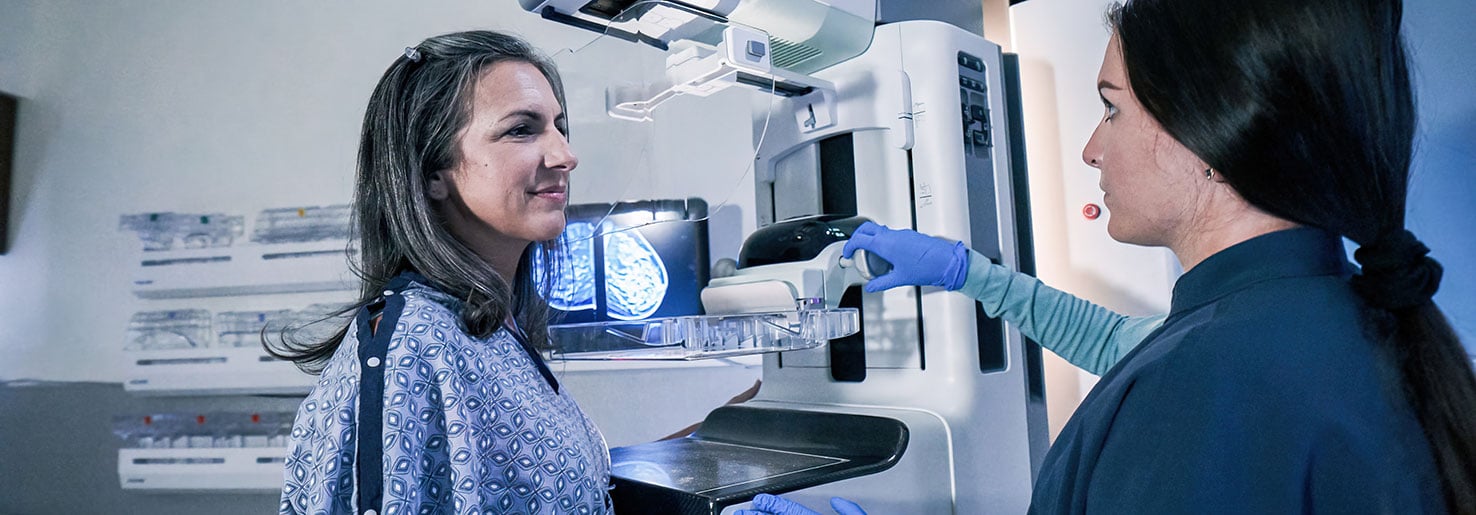Breast Cancer Survival Rate
The breast cancer survival rate is a benchmark that is sometimes used to discuss breast cancer outcomes. Patients who are interested in learning about the survival rate should keep in mind that this information is simply an average based on the outcomes of many breast cancer patients with widely different characteristics. While the overall survival rate can be a useful point of reference in certain circumstances, the bottom line is that no single patient can be considered average. Therefore, the survival rate cannot predict what will happen in any one situation.
Survival rates are expressed in terms of years. For example, the 10-year breast cancer survival rate refers to the percentage of patients who survive 10 years or longer after being diagnosed. One key shortcoming of the breast cancer survival rate is that it must be derived from information related to patients who were diagnosed and treated several years ago (i.e., to determine the 10-year survival rate, researchers evaluate the outcomes of patients who were diagnosed and treated at least 10 years ago). As research continues and more is learned about breast cancer, new and better treatments are constantly being developed. This will likely improve the experiences of patients who are being diagnosed and treated today, so their outcomes are projected to be better than those reflected in the currently published survival rates.
What is the survival rate of breast cancer?
The National Cancer Institute’s Surveillance, Epidemiology, and End Results (SEER) Program database, as published by the American Cancer Society, groups five-year relative breast cancer survival rates into the following three classifications:
- Localized – When there’s no sign that the malignancy has metastasized (spread) beyond the breast, the five-year relative survival rate is 99%. Notably, this figure pertains only to invasive breast cancer and does not include ductal carcinoma in situ (an extremely early type of breast cancer characterized by the presence of abnormal cells within a milk duct).
- Regional – Once breast cancer spreads to nearby structures or lymph nodes, the five-year relative survival rate decreases to 86%.
- Distant – After breast cancer has metastasized to distant areas of the body (for example, the lungs, liver or bones), the five-year relative survival rate lowers to 29%.
Combining all of these stages together produces an overall five-year relative breast cancer survival rate of 90%. The American Cancer Society has also published data indicating that the 10-year relative survival rate is 84%, and that the 15-year relative survival rate is 80%. It should be noted that none of these survival rates apply to inflammatory breast cancer or triple negative breast cancer.
Understanding breast cancer survival rates
As was explained above, the figures contained in the preceding section constitute relative survival rates. A relative survival rate indicates how likely it is that someone with a disease will survive over a certain period of time, as compared to someone without that condition. For example, consider the 86% regional breast cancer survival rate referenced above—this means that when compared to someone without breast cancer, someone with regional breast cancer is approximately 86% as likely to live for at least five years after being diagnosed.
It’s important to remember that the average survival rate for breast cancer is simply an estimate and does not have any bearing on a specific patient’s prognosis. An individual’s expected outcome will take a variety of factors into account, including:
- The person’s age and overall health
- The tumor grade
- Whether the cancer cells contain hormone receptors
- Whether the cancer tests positive for human epidermal growth factor receptor 2 (HER2)
- How well the cancer responds to treatment
If you’ve been diagnosed with breast cancer—or if you’re experiencing symptoms and are concerned that you might have this malignancy—you should consult with a specialist so that they can provide you with information and recommendations tailored to your specific circumstances.
Lifestyle factors influencing breast cancer survival rates
There are many lifestyle factors and good health practices that can influence and improve the breast cancer survival rate. Most of those factors are under a patient’s control, such as:
- Eating a variety of nutritious foods, such as fruits and vegetables
- Engaging in regular physical activity
- Maintaining a healthy weight
- Refraining from smoking and alcohol
Breast cancer treatment at Moffitt Cancer Center
Through our commitment to conducting innovative clinical trials, Moffitt Cancer Center can offer our patients the very latest in treatment options. Our overriding goal is to provide comprehensive care and compassionate support to enhance each patient’s quality of life.
If you have questions about the breast cancer survival rate, you don’t need a referral to consult with the renowned cancer team at Moffitt. Just call 1-888-663-3488 or fill out our new patient registration form online. At Moffitt Cancer Center, we understand how overwhelming it can feel when you’re diagnosed with breast cancer or any other type of malignancy. With that in mind, we’ve made it our goal to provide each new patient with rapid access to a cancer expert.
References
American Cancer Society: Breast Cancer Facts & Figures 2019-2020
American Cancer Society: Survival Rates for Breast Cancer

